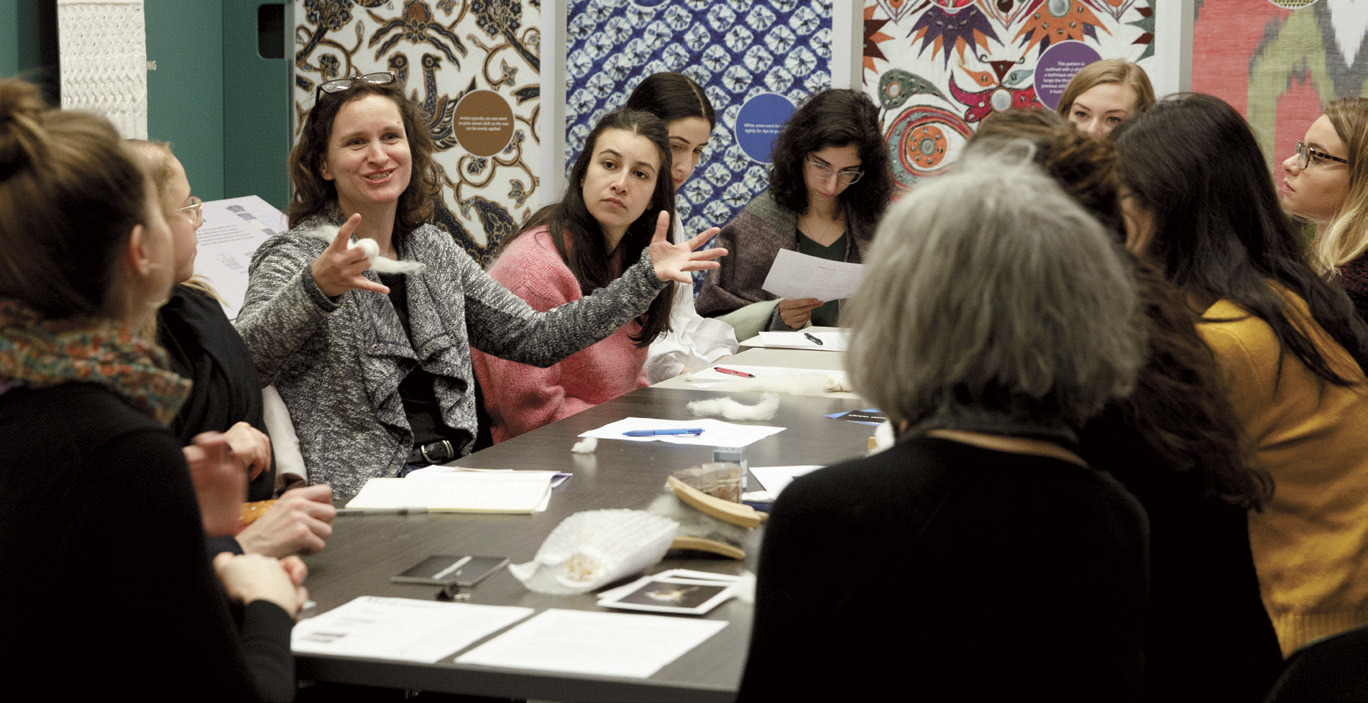Originally published in the GW Textile Museum's Museum Magazine, April 2019.
Bibiana Obler, Associate Professor of Art History, Corcoran School of the Arts & Design
Bibiana Obler, GW associate professor of art history, specializes in modern and contemporary art and craft. When The Textile Museum announced its move to GW, she was excited by the prospect of new ways to work with its collections beyond the occasional field trip. Despite not being an expert in the museum’s holdings, ideas for an exhibition started percolating. She brainstormed with friend Phyllis Rosenzweig, curator emerita of the Hirshhorn Museum and Sculpture Garden and a former visiting professor at the Corcoran School of the Arts & Design and GW.
Fast Fashion / Slow Art, the exhibition born out of this collaboration, will be on view at the Corcoran from August 8 through December 15, 2019, and is co-presented with the George Washington University Museum and The Textile Museum. The show is comprised of videos and performances that address, from a variety of perspectives, issues concerning the production and distribution of textiles and clothing. It aims to catalyze conversations on topics ranging from how consumers can affect labor conditions in garment industries to how designers can offer more environmentally sustainable garments.
Meaningful student engagement and learning opportunities support this exhibition. Obler and Rosenzweig worked closely with Arthur Foster, a master’s student in art history at GW, to complete the exhibition catalogue. This spring, Obler is teaching a graduate seminar in which students are focused on two concrete exhibition-related outcomes. Students are collaborating with Lori Kartchner, museum programs associate, to develop content for a consumer guide to sustainable fashion that will be available to museum visitors. Second, students will pursue research topics of their own choosing that they will present at an event in fall 2019.
Obler will also teach two courses in conjunction with the exhibition this fall. In an upper-level undergraduate seminar, students will again have opportunities to present their own research and insights into the exhibition to public audiences. Ina Dean’s Seminar (a course designed for incoming first-year undergraduates), “The Art of the Exhibition,” students will curate their own exhibition on issues relating to fast and/or slow fashion in GW’s student-run Gallery 102. In an interdisciplinary social impact course offered by GW’s Innovation Center this fall, students will work directly with community clients to provide human-centered solutions to a problem facing the garment industry.
While the seed for Fast Fashion / Slow Art was planted by The Textile Museum collections in 2013, developing this exhibition gave Obler the excuse to reach out to colleagues across the university—a reminder of the unique potential of university museums.
What better place to bring together artists, students, scholars from multiple disciplines, professionals, activists, conscientious consumers, and art lovers than a university museum? Hopefully the conversations sparked by Fast Fashion / Slow Art will generate new ideas to prevent the rapid accumulation of textile waste in landfills.
GW’s Corcoran School of the Arts & Design, Washington, D.C.
Thu, August 8, 2019 to Sun, December 15, 2019
Exhibition open to the public from Aug. 8, 2019, to Dec. 15, 2019
Tuesday – Sunday 1 – 5 p.m.
Bowdoin College Museum of Art, Brunswick, Maine, Jan. 30, 2020–Aug. 2, 2020
Flagg Building
500 17th Street NW
The Galleries off of the Atrium
Washington, DC 20006


